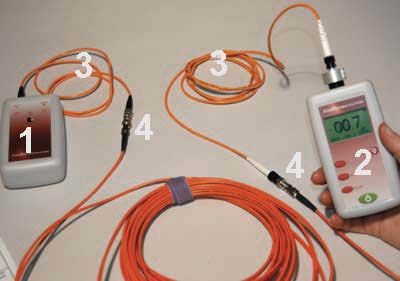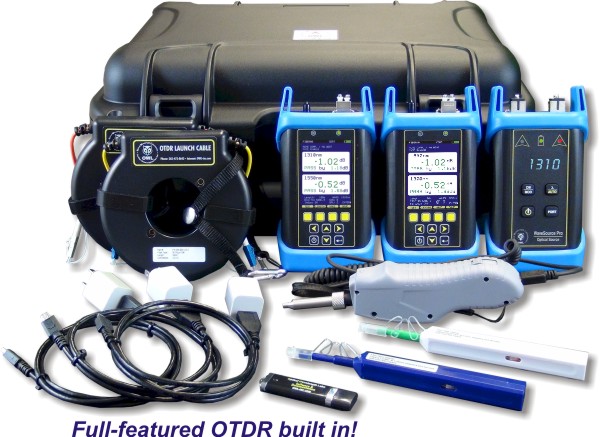How much does robotic vision technology for businesses
Recognizing Just How an Optical Measurement System Improves Precision in Industrial Applications
Optical measurement systems play a crucial duty in improving accuracy across numerous commercial applications. By leveraging innovative modern technologies such as laser interferometry and 3D imaging sensing units, these systems supply high-resolution, non-contact dimensions. This ability lessens the threat of damaging delicate elements while making sure accuracy. However, the influence of these systems expands past mere measurements. Exploring their benefits, applications, and future fads discloses a complicated landscape of development and challenges that benefits closer examination.
The Essentials of Optical Measurement Systems
Optical measurement systems act as necessary tools in numerous industrial applications, offering specific information collection and analysis. These systems make use of light as a key means of measurement, leveraging optical principles to examine measurements, placements, and surface features of things. They incorporate elements such as lasers, cams, and sensing units, which work together to record high-resolution photos and information.
The modern technology enables non-contact dimensions, lessening the threat of damaging sensitive elements. Optical measurement systems are versatile, locating utility in quality assurance, setting up confirmation, and dimensional analysis throughout different markets. They are specifically effective in settings where typical measurement techniques may fail, such as gauging complicated geometries or observing fast movements.
As sectors continue to advance, the combination of optical measurement systems will certainly stay crucial for making sure accuracy and effectiveness, ultimately boosting product high quality and operational productivity in different making processes.
Secret Technologies Behind Optical Measurement
Trick modern technologies such as laser interferometry techniques and 3D imaging sensing units play a crucial role in the performance of optical measurement systems (optical fibre diameter analyser). These technologies enable specific dimensions and comprehensive analysis in various commercial applications. Understanding their functionalities is crucial for utilizing the complete capacity of optical measurement systems
Laser Interferometry Techniques
Many laser interferometry strategies have actually changed the field of optical measurement, using unmatched precision and precision in various commercial applications. These strategies make use of the interference of coherent light waves to determine range, displacement, and surface irregularities with nanometer-level accuracy. Typical approaches consist of Michelson interferometry, which splits a beam and examines stage changes, and Fabry-Pérot interferometry, known for its high resolution in gauging tiny modifications. Additionally, laser Doppler interferometry utilizes regularity shifts to analyze rate, making it very useful in vibrant dimensions. The flexibility of these methods enables their integration right into diverse production procedures, improving quality assurance and ensuring adherence to rigorous resistances. Therefore, laser interferometry remains to play a crucial duty ahead of time industrial measurement standards.
3D Imaging Sensors
Improvements in measurement innovation have actually brought about the development of 3D imaging sensors, which play a substantial role in optical measurement systems. These sensing units capture three-dimensional data via various techniques such as triangulation, time-of-flight, and organized light. By properly rebuilding the form and measurements of items, 3D imaging sensing units boost the precision of measurements in industrial applications. They give real-time comments, helping with top quality control and ensuring that parts meet rigid specs. Furthermore, their capacity to operate in challenging settings, such as varying lighting conditions, makes them vital in producing procedures. As industries progressively take on automation, the integration of 3D imaging sensing units into optical measurement systems is expected to drive additional enhancements in effectiveness and accuracy.
Benefits of Optical Measurement in Sector
Standard measurement methods have long been the standard in industrial settings, optical measurement systems offer considerable benefits that improve accuracy and effectiveness. These systems use light to capture information, resulting in high-resolution measurements that are typically unattainable with traditional strategies. The non-contact nature of optical measurements minimizes the danger of damaging sensitive parts throughout the assessment procedure. In addition, the speed of optical dimensions enables rapid information procurement, assisting in prompt decision-making in busy commercial environments.
Optical systems are adaptable, efficient in determining numerous products and shapes without the requirement for considerable recalibration. This adaptability adds to improved process and performance. Moreover, the automation potential of optical measurement systems minimizes human mistake, making sure consistent high quality control. Generally, the combination of optical measurement innovation stands for a modern change in the direction of enhanced precision and dependability in industrial operations, inevitably causing enhanced product top quality and operational efficiency.
Applications of Optical Measurement Systems

Optical measurement systems play a crucial duty in improving production process optimization by supplying accurate information for decision-making. These systems ensure quality assurance assurance with real-time monitoring and analysis of production metrics. As markets significantly adopt these innovations, their effect on performance and item reliability comes to be evident.
Manufacturing Process Optimization
Enhancing manufacturing process effectiveness is significantly dependent on the integration of optical measurement systems. These systems supply real-time data on different criteria, allowing producers to examine procedures with a high level of accuracy. By allowing exact dimensions of measurements, surface qualities, and product homes, optical measurement systems help with the recognition of inadequacies and traffic jams in assembly line. The immediate feedback from these systems empowers engineers to make enlightened decisions, resulting in enhanced machining, assembly, and finishing procedures. Moreover, the ability to monitor problems continually enables adaptive adjustments, minimizing downtime and waste. As sectors go for greater efficiency and decreased operational expenses, optical measurement systems emerge as critical tools for boosting production procedure optimization.

Quality Assurance Assurance
The integration of optical measurement systems substantially effects top quality control assurance in commercial setups. These systems supply visit homepage precise and non-destructive dimensions, allowing suppliers to discover issues and discrepancies early in the production procedure. By using advanced imaging techniques, such as laser triangulation and interferometry, optical measurement systems guarantee that elements fulfill rigid requirements. This facilitates real-time monitoring, lowering waste and lessening the danger of defective items reaching the market. In addition, the information collected can be examined to improve manufacturing procedures additionally, leading to continuous improvement. Ultimately, the adoption of optical measurement systems enhances reliability and uniformity in quality assurance, fostering greater self-confidence amongst stakeholders and consumers alike in the end products provided.
Case Researches: Successful Applications
Many industries have efficiently official statement integrated optical measurement systems to boost their functional efficiency and product quality. In the automotive industry, a popular supplier embraced a laser triangulation system to keep track of the placement of lorry parts. This execution considerably decreased setting up mistakes, resulting in improved security and reduced expenses.
In the aerospace industry, a leading airplane maker utilized optical assessment for precision measurements of turbine blades, attaining a reduction in making tolerances and much better performance standards.
A customer electronics firm implemented optical measurement modern technology during the manufacturing of smartphone screens, resulting in improved quality control and a reduction in defective items.
These study show how optical measurement systems not just improve precision but likewise add to general functional efficiency, showing their value across numerous sectors. By resolving specific requirements, these systems have actually shown to be essential devices in modern industrial applications.
Obstacles and Limitations of Optical Measurement
While optical measurement systems offer considerable benefits in numerous industrial applications, they are not without their challenges and constraints. One significant issue is level of sensitivity to environmental problems, such as temperature level fluctuations, humidity, and dirt, which can adversely influence measurement precision. In addition, optical systems commonly call for specific placement and calibration, making them at risk to human error throughout setup and operation. Another limitation is the potential for interference from ambient light, which can misshape dimensions and demand intricate filtering system strategies. Specific materials and surface areas might offer troubles, as reflective or clear attributes can lead to inconsistent readings. The cost of premium optical parts and systems can additionally be an obstacle for some markets, limiting prevalent fostering. Specialized training is usually required for personnel to properly operate and preserve these systems, including to the overall complexity and functional difficulties.
Future Trends in Optical Measurement Technology
As advancements in modern technology remain to shape commercial processes, the future of optical measurement systems is positioned for considerable evolution. Arising patterns have a peek at this site suggest a shift in the direction of improved integration of expert system and artificial intelligence, making it possible for systems to evaluate data in real-time, identify patterns, and enhance decision-making processes. Additionally, the development of miniaturized sensing units and advanced optics is anticipated to lead to even more compact and flexible measurement solutions, making them obtainable for a wider variety of applications.
Additionally, the incorporation of 3D imaging and high-resolution abilities will certainly enable unprecedented precision in measurements, which is essential for markets such as aerospace and automotive. The promote automation and Market 4.0 will certainly additionally drive the need for optical measurement systems that can conveniently user interface with various other innovations. As these fads unravel, optical measurement systems will likely come to be indispensable to achieving greater efficiency and precision throughout various industrial industries.

Regularly Asked Inquiries
Exactly How Do Optical Measurement Systems Compare to Traditional Measurement Approaches?
Optical measurement systems use better precision and speed compared to traditional approaches - optical measurement system. They reduce human mistake, improve data collection effectiveness, and provide real-time outcomes, making them progressively favored in different commercial applications for exact dimensions
What Industries Benefit the Most From Optical Measurement Systems?
Optical measurement systems substantially benefit sectors such as aerospace, automobile, and electronic devices. Their ability to give high-precision measurements improves quality assurance, minimizes production errors, and enhances total efficiency, making them essential in competitive production environments.
Can Optical Measurement Systems Be Personalized for Specific Applications?
Optical measurement systems can undoubtedly be customized for particular applications. By readjusting parameters such as wavelength, resolution, and calibration methods, sectors can customize these systems to meet special precision and accuracy demands properly.
What Is the Maintenance Requirement for Optical Measurement Systems?
The maintenance demands for optical measurement systems typically include normal calibration, cleansing of optical parts, and software application updates. Following these techniques guarantees accuracy, reliability, and longevity of the measurement tools in various applications.
Exactly How Do Environmental Aspects Influence Optical Measurement Precision?
Ecological variables, such as temperature fluctuations, moisture, and dust, significantly impact optical measurement accuracy. These components can misshape light paths and interfere with sensing unit readings, eventually compromising the dependability and precision of measurements in industrial settings.